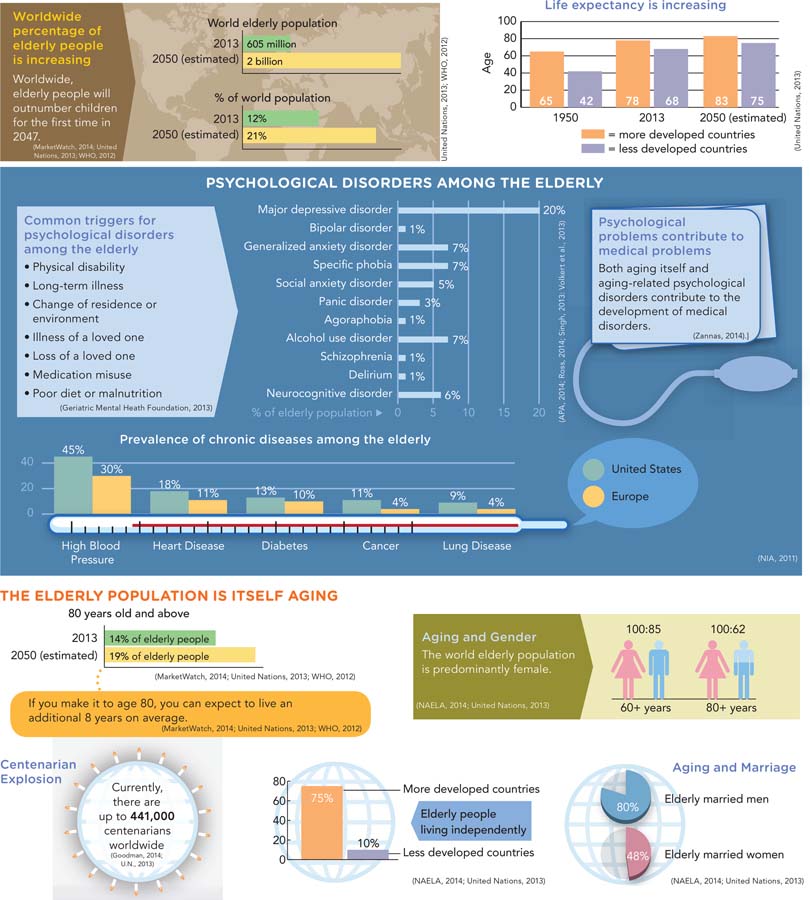15.3 Anxiety Disorders in Later Life
Anxiety is also common among elderly people (APA, 2014). At any given time, as many as 11 percent of elderly individuals in the United States experience at least one of the anxiety disorders. Surveys indicate that generalized anxiety disorder is particularly common, affecting up to 7 percent of all elderly people (ADAA, 2014). The rate of anxiety also increases throughout old age. For example, people over 85 years of age report higher rates of anxiety than those between 65 and 84 years. In fact, all of these numbers may be low, as anxiety in the elderly often goes unrecognized by healthcare professionals (APA, 2014; Jeste et al., 2005).
BETWEEN THE LINES
Losing a Spouse
Widowed men suffer more depression, other psychological disorders, and physical illnesses than widowed women
(Etaugh, 2008; Fields, 2004; Wortman et al., 2004; Canetto, 2003).
There are many things about aging that may heighten the anxiety levels of certain people (Bower et al., 2015; Lenze et al., 2011). Declining health, for example, has often been pointed to, and in fact, older persons who have significant medical illnesses or injuries report more anxiety than those who are healthy or injury-
Older adults with anxiety disorders have been treated with psychotherapy of various kinds, particularly cognitive-

InfoCentral
507
THE AGING POPULATION
The number and proportion of elderly people in the United States and around the world are ever-
